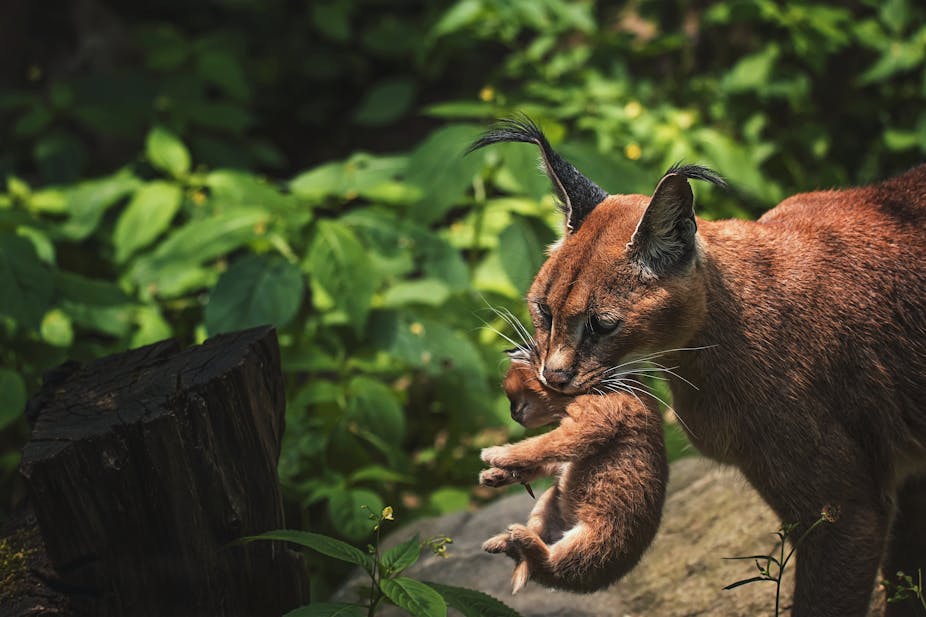Wildlife near cities face many dangers. Some are easy to detect, such as when new developments destroy natural habitat. Others are less obvious.
For example, rat poisons are a useful tool for controlling a common household problem. But many who use them don’t realise that they have dangerous side effects for wildlife.
Rat poisons are designed to work slowly in their target species, rats, so that they ingest lethal doses of the poisons. The rats then become sick and increasingly toxic over a period of days or weeks. Poisoned rats then become easy, highly toxic prey for predators.
The side effects of exposure to these poison compounds are especially worrying for local wildlife in Cape Town, South Africa. The city is situated within a global biodiversity hotspot that includes the world-renowned Table Mountain National Park. Here, with thousands of plant species already threatened by habitat loss and modification, the poisoning of numerous predatory wildlife species that help retain ecosystem stability could disrupt the delicate ecological balance.
Using samples from seven species, scientists from the Institute for Communities and Wildlife in Africa at the University of Cape Town investigated just how frequently Table Mountain’s wild predators are exposed to rat poisons through their prey.
We detected five different commercially available rat poisons in the livers of 81% of the predators we tested. Predators included common ones such as genets, Cape Eagle owls, and water mongooses, and rarer ones such as caracals, otters, and a honey badger. The detection of rat poison in otters is especially interesting because it suggests that poisons used on land can make their way into the city’s streams, wetlands and estuaries.
Some wildlife species are already threatened by habitat loss, vehicle collisions, poaching, disease, and fire. Rat poisons make these populations even more vulnerable to local extinction. When many species are affected within a single ecosystem, the effects of the poison exposure can escalate to threaten the functioning of an entire ecosystem.
The finding of widespread toxic exposure to rat poison in Cape Town’s wildlife echo those for predatory species elsewhere in Europe and North America, such as polecats, owls and raptors, coyotes, endangered kit foxes, fishers, and bobcats. For some of these species, anticoagulants are named as a leading cause of death and are even linked with at least one dramatic population decline in a species similar to caracals, the North American bobcat. Researchers fear a similar fate for wildlife near Cape Town.

Multiple species exposed to rat poisons
In vertebrates – animals that have a backbone or spinal column – the liver is the organ responsible for removing toxins from the blood. This is where we looked for evidence of rat poison exposure. One challenge was that testing the liver meant we could only sample animals that were already dead, limiting how many animals we could assess.
To better understand how Cape Town’s local predators come into contact with poisoned rats, we explored the rich data set of the Urban Caracal Project, which included liver samples from 24 caracals.
Alarmingly, 92% of caracals had rat poisons in their livers. But the amount of poison in their livers varied. Caracals that frequented vineyards had the highest levels. This may be because vineyards allow caracals a safe space to hunt close to the urban edge – where rat poisons are widespread.
But rat poisons are also affecting caracals that have never even seen a rodent. Our analysis also revealed a caracal kitten as having very high levels of poisons. It appears that mothers may inadvertently poison their own young through contaminated milk.
A widespread problem
With greater economic opportunities in cities, rapid urbanisation is a reality. The challenges of managing waste and the animals it attracts, are rapidly mounting.
Using poisons is quick but dirty from a wildlife perspective: the ultimate price will be paid by those animals at the top of the peri-urban food chain, such as leopards and caracals.
Raising awareness about this is the first step. Ensuring the conservation of urban wildlife needs changes in the way that people understand their individual impact on local ecosystems.
As consumers, people need more eco-friendly alternatives to rat poison. Nevertheless, the simplest solution is well within everyone’s reach: improve the management of waste which attracts rats in the first place.
Households can make a choice about whether they use poisons in or around their homes. In other parts of the world similar research findings have galvanised the public and spurred regulations on the use of these poisons.
We hope these research findings will stimulate a similar dialogue with home owners, businesses, and municipal authorities on how to reduce environmental contamination by rat poisons and other toxins in Cape Town and beyond.

